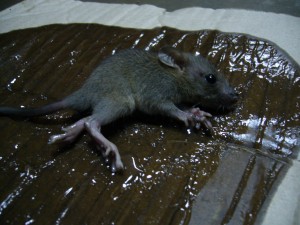
Leptospirosis- Symptoms & Signs
Source: Center of Disease Control, USA
What is Leptospirosis?
Leptospirosis is a bacterial disease that affects humans and animals. It is caused by bacteria of the genus Leptospira commonly carried by urban rats, and also not limited to cattle, pigs, dogs and wild animals.
How is Leptospirosis spread to human?
The bacteria that cause leptospirosis are spread through the urine of infected rats, which can get into water or soil and can survive there for weeks to months. Many different kinds of wild and domestic animals carry the bacterium.
How can human get infected by Leptospirosis?
- Contact with urine (or other body fluids, except saliva) from infected rats and other animals.
- Contact with water, soil, or food contaminated with the urine of infected rats and other animals.
The bacteria can enter the body through skin or mucous membranes (eyes, nose, or mouth), especially if the skin is broken from a cut or scratch. Drinking contaminated water can also cause infection. Outbreaks of leptospirosis are usually caused by exposure to contaminated water, such as floodwaters. Person to person transmission is rare.
What are the symptoms and signs of Leptospirosis?
In humans, Leptospirosis can cause a wide range of symptoms, some of which may be mistaken for other diseases. Some infected persons, however, may have no signs at all.
Some of the wide range of symptoms, including:
- High fever
- Headache
- Chills
- Muscle aches
- Vomiting
- Jaundice (yellow skin and eyes)
- Red eyes
- Abdominal Pain
- Diarrhea
- Rash
The time between a person’s exposure to a contaminated source and becoming sick is 2 days to 4 weeks. Illness usually begins abruptly with fever and other symptoms.
Leptospirosis may occur in two phases:
- After the first phase (with fever, chills, headache, muscle aches, vomiting, or diarrhea) the patient may recover for a time but become ill again.
- If a second phase occurs, it is more severe; the person may have kidney or liver failure or meningitis. This phase is also called Weil’s disease.
The illness lasts from a few days to 3 weeks or longer. Without treatment, recovery may take several months.
Without treatment, Leptospirosis can lead to kidney damage, meningitis (inflammation of the membrane around the brain and spinal cord), liver failure, respiratory distress, and even death.
How to take control of Leptospirosis?
One of the best way to take control of Leptospirosis is by keeping rats away from entering our home and work place.
Utilizing Green Bio-Repellent gel to keep them away from your premise and to trap those that are residing will significantly reduce rats infestation and Leptospirosis bacteria.
Learn more by clicking DIY Green Pest Control Management and find out how you can take control of Rat and other pests at home.
Click buy now if the above matches your Green Pest Control needs.



Comments No comments